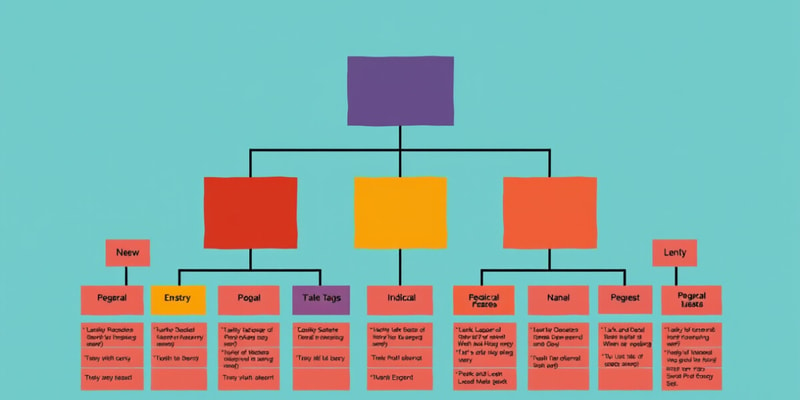Podcast
Questions and Answers
Why do organizations commonly adopt a divisional structure?
Why do organizations commonly adopt a divisional structure?
What does a matrix structure primarily emphasize?
What does a matrix structure primarily emphasize?
What is a disadvantage of a matrix structure?
What is a disadvantage of a matrix structure?
What does a divisional structure depend on?
What does a divisional structure depend on?
Signup and view all the answers
What is the main advantage of a multidivisional structure?
What is the main advantage of a multidivisional structure?
Signup and view all the answers
What is vertical differentiation in organizational design?
What is vertical differentiation in organizational design?
Signup and view all the answers
What is horizontal differentiation in organizational design?
What is horizontal differentiation in organizational design?
Signup and view all the answers
What does vertical differentiation establish in an organization?
What does vertical differentiation establish in an organization?
Signup and view all the answers
What is the primary focus of horizontal differentiation?
What is the primary focus of horizontal differentiation?
Signup and view all the answers
How are roles differentiated in horizontal differentiation?
How are roles differentiated in horizontal differentiation?
Signup and view all the answers
What are the disadvantages of vertical differentiation in organizations?
What are the disadvantages of vertical differentiation in organizations?
Signup and view all the answers
What is the challenge that managers face in balancing differentiation and integration?
What is the challenge that managers face in balancing differentiation and integration?
Signup and view all the answers
What does centralization in organizations bring?
What does centralization in organizations bring?
Signup and view all the answers
What does balancing standardization and mutual adjustment involve?
What does balancing standardization and mutual adjustment involve?
Signup and view all the answers
What happens in the transition from functional structure to divisional structure?
What happens in the transition from functional structure to divisional structure?
Signup and view all the answers
Study Notes
Balancing Organizational Differentiation and Integration
- Differentiation in organizations can be vertical or horizontal, with advantages including control, supervision, feedback, and career management, but also disadvantages such as less autonomy, distorted communication, slow decision-making, and high bureaucratic costs.
- Vertical differentiation offers economies of scale and specialization but comes with high coordination costs, while horizontal differentiation leads to divergent sub-unit orientation and low flexibility.
- Managers face the challenge of balancing differentiation and integration by guiding the development of core competences and choosing appropriate integrating mechanisms for subunits to cooperate effectively.
- Centralization brings clear and unified decision-making but limits autonomy and flexibility, while decentralization enables lower managers to make important decisions and allows top managers to focus on long-term strategy.
- Balancing standardization and mutual adjustment involves finding a way to use rules and norms for standardizing behavior while allowing for mutual adjustment to discover new and better ways to achieve goals.
- Functional structure groups people based on common skills, expertise, or resources, serving as the foundation of horizontal differentiation and allowing for increased effectiveness in achieving organizational goals.
- Advantages of functional structure include learning from one another, specialized productivity, and the development of norms and values, but it also brings communication, measurement, location, customer, and strategic problems.
- Integration can involve modifying functional structure by adding full-time integrators with or without authority, with support conditions including characteristics of the integrator and the units to be integrated.
- Pathological situations in integration arise when high differentiation and interdependency require complex coordination mechanisms, leading to the need for support conditions for implementation.
- Characteristics of the integrator and the units to be integrated, such as physical and cognitive proximity, play a crucial role in successful integration.
- The transition from functional structure to divisional structure involves modifications to the organizational design, moving from a purely functional approach to a divisional one.
- The text is part of a course on Organization and Information Systems, taught by Professors Diego Campagnolo and Massimiliano Oleotto in the academic year 2023-2024.
Studying That Suits You
Use AI to generate personalized quizzes and flashcards to suit your learning preferences.
Related Documents
Description
Test your knowledge of organizational differentiation and integration with this quiz. Explore concepts such as vertical and horizontal differentiation, centralization, decentralization, functional structure, and the role of integrating mechanisms in achieving effective cooperation. Challenge yourself on the balancing act that managers face in guiding the development of core competences and choosing appropriate integration mechanisms for subunits.




